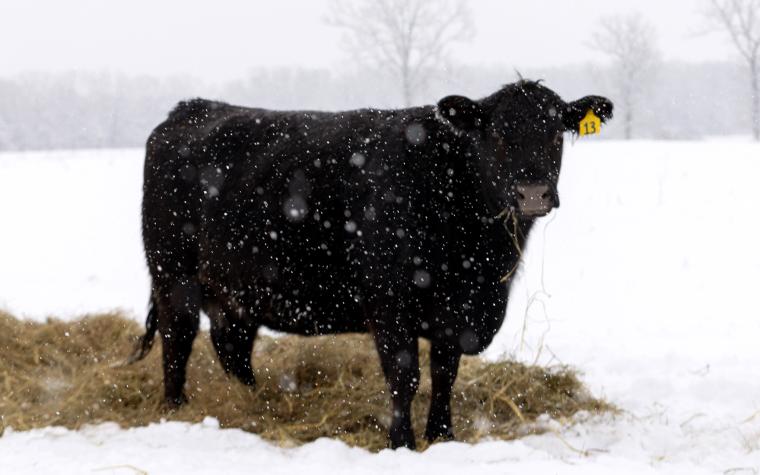MOUNTAIN GROVE, Mo. – With spring calving season underway, producers want as many healthy calves on the ground as possible.
“A lot of folks see pregnancy loss within their herd and think of it in two ways: either a cow aborting a calf during gestation, or losing the calf after it is already made it on the ground,” said Chloe Collins, University of Missouri Extension dairy specialist. But multiple factors go into pregnancy loss, both in utero and after the calf is born.
“Any calf loss can not only be detrimental to your calf crop and your bottom line, but sometimes it can cause a loss of the cow itself,” said Collins. “There are different types and stages of pregnancy loss, different ways they affect your herd and multiple ways producers can work to mitigate loss.”
Pregnancy loss in utero can happen at almost any time during gestation. This loss may not be apparent in early gestation unless the producer is proactively pregnancy-checking, but is easily recognizable in late gestation when a cow “slips” or aborts her calf, she said.
Gestational pregnancy loss can be caused by:
- Infection or disease.
- Poor nutrition.
- Toxins.
- Hormone imbalances.
- Genetics.
- Injuries or inflammation.
- Heat stress.
Many factors work against successfully breeding, growing the embryo into a calf during gestation and then delivering a healthy calf.
“So, what can we do to help her out?” Collins said. “Preventative measures that we as producers can put in place are mostly management-related and can be implemented quickly.”
Some management changes to help mitigate calf loss:
• Work with a veterinarian to make sure pre-breeding vaccination protocols are up to par. MU Extension guides for heifers and cows are a good place to start.
• Evaluate the cow’s nutritional needs and create a feeding program, or a ration, that best suits her increased plane of nutrition during gestation and lactation.
• Ensure cattle have safe handling and housing facilities to mitigate stress, accidents, injuries and heat stress and increase overall cow comfort.
• Select for genetically sound animals, whether it’s utilizing EPDs (expected progeny differences) when purchasing your herd bull or using artificial insemination in your herd.
• Keep accurate records and update them often. This can show trends over the months and years and may innately highlight areas for improvement.
“Decreasing calf loss can be a long-run effort, but it is worth every ounce of preparation and prevention,” Collins said.
For more information, the MU Extension publication “Understanding and Minimizing Pregnancy Loss in Cattle” is available for free download. You can also contact Collins at chloecollins@missouri.edu or 417-349-4134.
Photo
Cow
During spring calving season, producers can take preventive measures to get as many healthy calves on the ground as possible. Photo by Chloe Collins, University of Missouri Extension.
